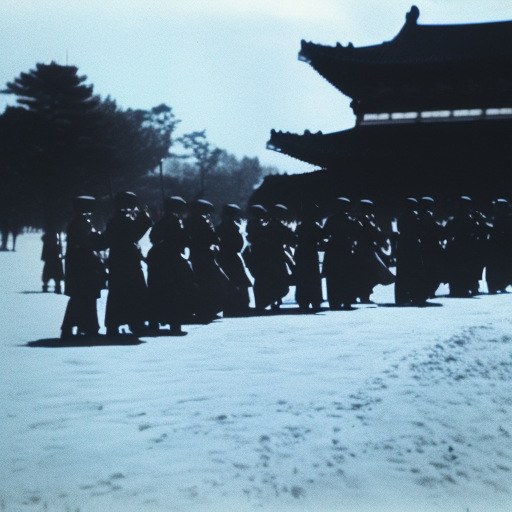Battle of Taegu: A Turning Point in the Korean War
The Battle of Taegu, which took place from August 5 to September 15, 1950, was a crucial turning point in the Korean War. It was a major battle between United Nations (UN) forces, primarily composed of South Korean and American troops, and the North Korean People’s Army (NKPA). The battle was fought in and around the city of Taegu (now spelled Daegu), located in the southeastern part of South Korea.
Background: The Korean War began on June 25, 1950, when North Korean forces invaded South Korea. The NKPA quickly advanced, capturing Seoul, the capital of South Korea, within days. The UN, led by the United States, intervened to support South Korea and pushed the NKPA back to the 38th parallel, the pre-war border between North and South Korea. However, the North Korean forces were determined to retake South Korea and launched a new offensive in August 1950.
The Battle: The Battle of Taegu was a critical part of the NKPA’s offensive. Taegu was strategically important as it served as a transportation hub and controlled access to the southeastern part of South Korea. The NKPA aimed to capture Taegu and push further south to cut off the UN forces from their supply lines and isolate them from the rest of South Korea.
The battle began on August 5, 1950, when the NKPA launched a series of attacks on the UN positions around Taegu. The UN forces, primarily composed of the US 1st Cavalry Division and the Republic of Korea (ROK) Army, put up a fierce resistance. The terrain around Taegu, characterized by mountains and valleys, provided natural defensive positions for the UN forces, making it difficult for the NKPA to make significant advances.
Despite the UN forces’ initial success in repelling the NKPA attacks, the situation became increasingly challenging. The NKPA outnumbered the UN forces and had superior firepower. They also employed guerrilla tactics and infiltrated behind the UN lines, causing confusion and disrupting supply lines. The UN forces faced heavy casualties and were at risk of being overwhelmed.
UN Counteroffensive: Recognizing the importance of holding Taegu, General Walton Walker, the commander of the Eighth United States Army, ordered a counteroffensive on August 18, 1950. The UN forces launched a series of attacks to push the NKPA back and regain control of the surrounding areas. The counteroffensive was supported by air strikes and artillery bombardment.
The UN counteroffensive was successful in pushing the NKPA back and relieving pressure on Taegu. The UN forces managed to regain control of key positions and secure their supply lines. The NKPA suffered heavy casualties and was forced to retreat.
Outcome: The Battle of Taegu was a significant turning point in the Korean War. The UN forces’ successful defense of Taegu halted the NKPA’s advance and prevented them from achieving their objective of isolating the UN forces. It boosted the morale of the UN forces and demonstrated their determination to resist the NKPA’s aggression.
The Battle of Taegu also marked the beginning of a series of UN counteroffensives that eventually pushed the NKPA back across the 38th parallel. The UN forces went on to recapture Seoul and advance into North Korea. However, the war would continue for several more years, ultimately ending in a stalemate and the division of Korea into North and South.
In conclusion, the Battle of Taegu was a critical battle in the Korean War. The UN forces’ successful defense of Taegu not only prevented the NKPA from achieving their objectives but also boosted the morale of the UN forces. The battle marked a turning point in the war and set the stage for the UN counteroffensives that would eventually push the NKPA back across the 38th parallel.












